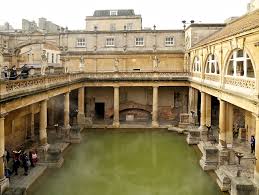Ancient Roman Houses: The ancient Romans were amazing builders. Buildings ranging from amphitheaters, public baths as well as beautiful sculptures, statues, paintings, etc all form an inseparable part of the ancient Roman architecture.

The ancient Romans had commendable insight and knowledge about the skills involved in building structures. The ancient Roman houses were wonderful structures ranging from the grandest villa to the vilest tenements. They were awe-striking buildings which created a sense of amazement in the eyes of the viewer.
Ancient Roman Houses
The ancient Rome house comprised of the townhouses. To begin with, the townhouse was meant for a single family accommodation. It was called Domus. These houses had a huge single main room called the atrium. The entrance had many small rooms opposite it. In some cases, the courtyard had a set of small rooms around it.

The size of a house reflected how wealthy the owner was. A wealthier house had the atrium, which served as the living room, leading into the tablinum, where the family ancestral records (tabulae) and portraits were kept. Other rooms were cubicula (bedrooms), a triclinium (dining room), Orci (reception rooms), a kitchen, and a lavatory. In some cases, there were baths as well as libraries in the townhouse.
Roman house Design
Another modified design of a townhouse was the strip house. It was especially common and widespread in the northwest provinces. A strip house comprised of a long side would be built facing the street, while one or more wings extended behind. Where frontage was expensive, these types of houses may have been built with one narrow end facing the main street which usually acted as a shop.
What were Roman houses made of
Other variations on the ancient Roman house style, in general, are an indicator of the wealth of the owner. The ancient Roman houses were generally built with wattle or daub infill set on foundations of low stone.

Mud brick was also commonly used. Interior decorations, which were often imported, were an even more reliable indicator of the wealth of the owner. Houses were usually painted red towards the ground and white above. A few have been found with additional stories and cellars.



